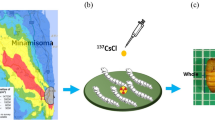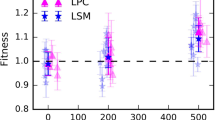Abstract
IN experiments to determine the possibility of producing mutations by treatment with neutrons, adult males of Drosophila melanogaster were subjected to a neutron bombardment derived from a 485 gm. block of beryllium exposed to the γ-rays from 4 gm. of radium. It is known that beryllium thus exposed produces neutrons of two velocities, the fast ones having an energy of 0·60 million electron-volts and the slow of 0·16 million electron-volts. Fast neutrons were used in one series of experiments, the very slow ones being excluded by means of a cadmium plate. In a second series, the fast neutrons were slowed down by passage through paraffin, so that only slow neutrons were used. In a third series, serving as a control, paraffin was substituted for the beryllium block, so that the flies received no neutrons but did receive the same gamma radiation and secondary radiation from the radium source as in the first two series. In these three series, a thick lead block was used to remove most of the radium γ-radiation. Finally, in a fourth series, serving as a second kind of control, the flies were not irradiated artificially in any way.
This is a preview of subscription content, access via your institution
Access options
Subscribe to this journal
Receive 51 print issues and online access
$199.00 per year
only $3.90 per issue
Buy this article
- Purchase on Springer Link
- Instant access to full article PDF
Prices may be subject to local taxes which are calculated during checkout
Similar content being viewed by others
Author information
Authors and Affiliations
Rights and permissions
About this article
Cite this article
NAGAI, M., LOCHER, G. Production of Mutations by Neutrons. Nature 140, 111–112 (1937). https://doi.org/10.1038/140111b0
Issue Date:
DOI: https://doi.org/10.1038/140111b0
This article is cited by
-
An analysis of the process of structural change in chromosomes ofDrosophila
Journal of Genetics (1940)
-
Neutronenbestrahlungsversuche zur Mutationsauslösung an Drosophila melanogaster
Die Naturwissenschaften (1938)
-
Auslösung von Mutationen an Drosophila melanogaster durch schnelle Li + D-Neutronen
Die Naturwissenschaften (1938)
Comments
By submitting a comment you agree to abide by our Terms and Community Guidelines. If you find something abusive or that does not comply with our terms or guidelines please flag it as inappropriate.



